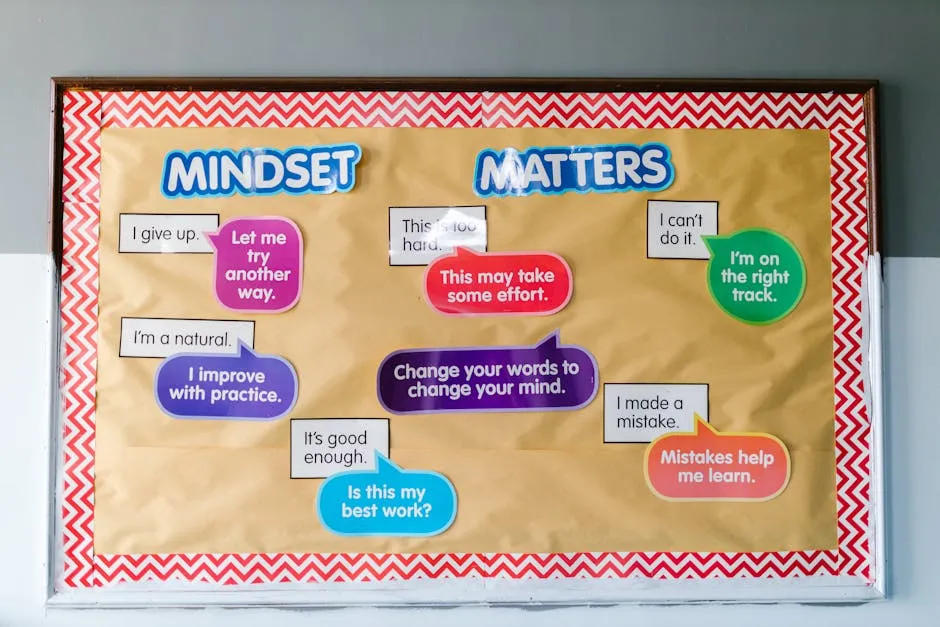Introduction
i-Ready diagnostic assessments play a vital role in education. They help identify each student’s unique learning needs. For parents and educators, understanding these scores is essential. This guide aims to clarify i-Ready diagnostic scores and their significance in fostering student growth.
If you’re looking to dive deeper into the world of educational assessments, you might want to check out the i-Ready Diagnostic Assessment Book. It’s a great resource for parents and teachers to understand the assessment better!
Summary and Overview
i-Ready diagnostics utilize an adaptive assessment format. This means questions adjust in difficulty based on each student’s responses. Scores are calculated based on this adaptive testing, providing insights into student performance. Assessments occur three times a year: fall, winter, and spring. They measure skills in reading and math, helping teachers tailor instruction. These scores are instrumental in differentiating instruction, ensuring personalized learning experiences.

To make learning even more interactive and fun, consider incorporating Educational Board Games into your classroom. They can boost engagement and provide a hands-on approach to learning!
Understanding i-Ready Diagnostic Scores
What are i-Ready Diagnostic Scores?
i-Ready diagnostic scores reflect a student’s proficiency in core subjects. The scores range from 100 to 800, indicating different levels of understanding. Each student’s test adapts to their skill level, making it unique to them. This adaptive nature allows for a more accurate assessment of what students know.
Interpreting these scores is crucial. Higher scores usually indicate stronger skills, while lower scores highlight areas for improvement. Personalized learning hinges on these insights, guiding teachers to address each student’s needs effectively. For instance, statistics show that the average score for 5th graders is around 560, while 8th graders typically score around 670. Understanding these benchmarks helps parents and educators set realistic goals.

For parents looking to enhance their children’s educational journey, Growth Mindset Books for Kids can be a fantastic addition to their reading list. These books foster resilience and a love for learning!
Score Levels and Descriptions
Understanding i-Ready levels is crucial for both teachers and students. Each score level, from AA to H, signifies specific skills and knowledge. Here’s a quick breakdown:
| Level | Description |
|---|---|
| AA (Kindergarten) | Focuses on foundational skills: number recognition, basic counting, and phonics. |
| A (1st Grade) | Assesses number sense, addition and subtraction within 20, and basic fractions. |
| B (2nd Grade) | Tests addition and subtraction within 100, basic multiplication, and comprehension of short texts. |
| C (3rd Grade) | Covers multiplication and division within 100, fractions, and vocabulary in context. |
| D (4th Grade) | Includes fractions, decimals, and comprehension of moderately complex texts. |
| E (5th Grade) | Assesses division of larger numbers, fraction operations, and complex vocabulary. |
| F (6th Grade) | Tests advanced arithmetic, introductory algebra, and basic geometry concepts. |
| G (7th Grade) | Focuses on algebraic expressions, ratios, and comparative analysis of texts. |
| H (8th Grade) | Includes linear equations, functions, and the ability to analyze arguments in reading. |
Progression between these levels shows a student’s growth. For example, moving from Level B to Level C indicates mastery of multiplication and division concepts. This progression is essential for educators to monitor development.

These levels help teachers identify where students excel and where they struggle. By understanding these scores, educators can tailor instruction to meet individual needs. For students, knowing their level can motivate them to improve and set specific learning goals.
To further enhance classroom engagement, consider using Classroom Decor Items. They can create an inviting learning environment that inspires creativity and focus!
Interpreting Percentile Ranks
Percentile ranks provide context for i-Ready scores. They show how a student’s performance compares to peers nationally. For instance, a percentile rank of 75 means your student scored better than 75% of students in the same grade across the country.
Calculating percentiles involves comparing scores against a national sample. This helps parents and educators understand the score’s significance. It also highlights trends in student progress over time.
Percentiles matter because they gauge improvement and learning trends. A consistent rise in percentiles indicates growing proficiency and understanding. Conversely, a drop may signal areas needing attention.
To illustrate, let’s look at percentile scores across grade levels. For example, a 5th grader scoring in the 85th percentile is performing significantly better than many peers. Understanding these ranks empowers both students and teachers to focus on learning growth effectively.

Fall, Winter, and Spring Norms
Understanding i-Ready norms is vital for tracking student progress. These norms tables outline average scores for reading and math across different testing periods. They show how students perform seasonally, revealing variability in scores.
For instance, a student might score higher in spring than in fall. This fluctuation is normal and can reflect various factors, such as classroom engagement or seasonal learning activities. Recognizing these patterns helps educators adjust their strategies.
Year-round learning is essential. The norms highlight the importance of consistent practice. Students who engage with material throughout the year often see more significant growth. Norms can guide teachers in identifying when students need extra support or advanced challenges.
To effectively track growth, educators can compare a student’s scores to the norms tables. If a student’s score improves consistently, it indicates effective learning. Conversely, a plateau might suggest a need for a new approach. By using these insights, teachers can ensure all students reach their potential.

Using i-Ready Scores to Inform Instruction
Tailoring Learning Experiences
Teachers can leverage i-Ready diagnostic scores to enhance instruction. These scores reveal each student’s strengths and weaknesses. For example, a student excelling in reading but struggling in math may benefit from targeted lessons in math.
Grouping students based on diagnostic results allows for focused instruction. This approach fosters differentiated instruction, ensuring every child gets the help they need. Teachers can create small groups to tackle specific skills, promoting personalized learning.

Adjusting the curriculum based on score insights is also crucial. If many students struggle with a particular concept, it may require revisiting that topic. This adaptability ensures that teaching methods align with student needs.
By utilizing diagnostic scores effectively, educators create a more engaging and responsive learning environment. This tailored approach not only boosts understanding but also encourages a love for learning.
Communicating with Parents
Effective communication about i-Ready scores is crucial. First, always provide context when discussing results. Instead of only stating the score, explain what it means. For example, a score of 550 might indicate proficiency in certain skills but may also highlight areas needing improvement. This clarity helps parents understand their child’s progress.
Engaging parents in their child’s learning process is essential. Encourage them to ask questions about the score reports. Offer them strategies to support their child at home. Simple actions, like reviewing assignments together or discussing learning goals, can enhance engagement.

Resources are also available for parents. Websites like i-Ready Central provide tips and tools to help. Educators can recommend specific activities tailored to their child’s needs. Testimonials from teachers emphasize the importance of parental involvement. They often note that students whose parents engage regularly perform better academically.
User Experiences
Students often have mixed feelings about i-Ready diagnostics. Many express anxiety before testing. They worry about their scores and how they’ll be perceived. Some students, however, feel a sense of accomplishment when they see improvement. This can significantly boost their motivation.
Perceptions of learning journeys vary. Some students see diagnostics as a chance to showcase their skills. Others feel overwhelmed by the pressure to perform well. Encouraging a positive outlook is vital. When students view tests as opportunities for growth, their engagement increases.

The impact of scores on motivation cannot be understated. High scores can inspire students to strive for more. Conversely, low scores might lead to frustration. Educators should foster resilience by framing scores as a starting point for improvement. By discussing this openly, students can better manage testing anxiety and stay motivated in their learning journey.
Encouraging Growth Mindset
A growth mindset is key to success in testing. It encourages students to see scores as stepping stones for improvement. When students understand that scores aren’t fixed, they can focus on growth rather than fear of failure.
Teaching students to view their scores as tools for progress is essential. For instance, a lower score can signify areas needing attention. Instead of feeling defeated, students can identify specific skills to work on. This approach transforms testing from a stressful event into a valuable learning opportunity.
Celebrating progress, not just proficiency, reinforces a growth mindset. Recognize small achievements alongside major milestones. For example, if a student improves from 400 to 450, celebrate that progress! This practice boosts confidence and motivation, helping students stay engaged.

Fostering resilience in learning is vital. Encourage students to embrace challenges and learn from mistakes. Remind them that every setback can lead to growth. Educators can share inspiring quotes, such as: “Mistakes are proof that you are trying.” This perspective helps students develop a positive relationship with assessment.
For creative expression, consider introducing Creative Writing Journals. They provide a wonderful outlet for students to express their thoughts and ideas, further enhancing their learning journey!
By nurturing a growth mindset, we empower students to thrive. They learn that persistence and effort lead to improvement. This foundation not only supports academic success but also prepares them for challenges beyond the classroom.

Please let us know what you think about our content by leaving a comment down below!
Thank you for reading till here 🙂
All images from Pexels




